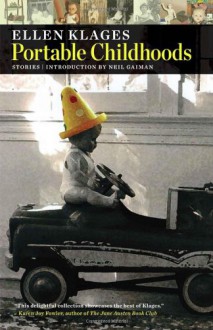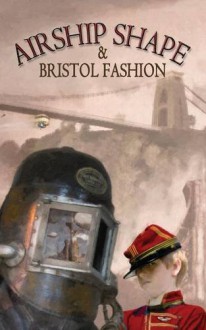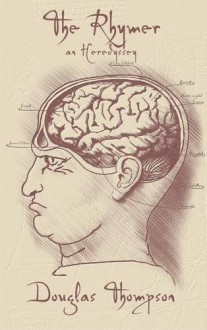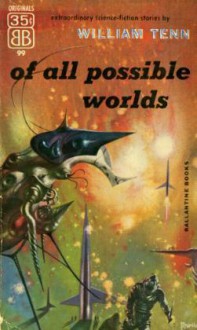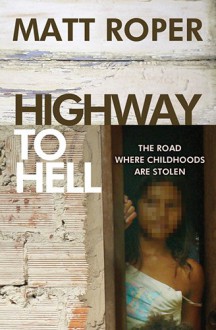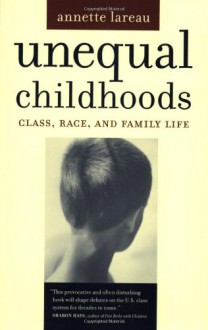
Read from December 11 to 14, 2012
This would be yet another book I own that I can't quite place where I first bumped into it. I had discovered the story of Augustus Hare somewhere - the words eccentric and horrible childhood sum up a lot - and then tracked this book down. I enjoyed reading it and somehow haven't come around for a reread until now. (Now that I think about it, I think it may have been cited in an article about the Unfortunate Events books and real life bad childhoods in literature. Or perhaps it was an article/book review of Peculiar People.)
This edition of Hare's biography is the edited version - Gutenberg has the three volumes of the original The Story of My Life here. Where you'll also find copies of Hare's other works: Life and Letters of Maria Edgeworth (two volumes) and Walks in Rome. So you can hop over to those if you feel the need for an immediate sample.
I should also add that this version (the edition I'm reviewing that is) contains Hare's drawings - if you get one of the ebook versions check and see if there's one with illustrations. And the preface of this book is really worth it for setting the scene and explaining Hare's accomplishments. According to it, The Story of My Life in the original form was six volumes long - the first three came out in 1896 and the next three in 1900. No idea which three are in the Gutenberg version. Also helpful is the family trees which take up two pages, because there are two families involved and who's who becomes a bit cryptic at times.
I'll probably quote a bit much from his childhood, which is only one part of the book, but it's because his childhood is so awful that you can't help focusing on it. It's worth remembering that psychological abuse isn't stuck in one time period, nor physical abuse. But then the Victorians didn't view children or childhood the way we do now. Hare also notes that servants were liable to have their ears boxed just as children were "and would as little have thought of resenting it" and that "people were not so tender in those days as they are now." (p. 28) Very different times.
His godmother writes Hare's parents and offers to raise him - the Hares had five children. Their reply:
p. 9: "My dear Maria, how very kind of you! Yes, certainly, the baby shall be sent as soon as it is weaned; and if anyone else would like one, would you kindly recollect that we have others"
...There the formal exchange took place which gave me a happy and loving home. I saw my father afterwards, but he seldom noticed me. Many years afterward I knew Mrs. Hare well and had much to do with her; but I have never at any time spoken to her or of her as a "mother," and I have never in any way regarded her as such. She gave me up wholly and entirely."
Whenever he uses the word mother he always means his godmother Maria. When he refers to his biological family he makes sure that we know who is "real" and who is not.
Much is made of Hare's childhood disobedience and his fussing over lessons - his knuckles are hit with a ruler, and when he's very naughty his uncle uses a riding whip on him. And what exactly are these lessons? (Make sure to note Hare's age.):
p. 18: "After breakfast I began my lessons which, although my mother an uncle always considered me a dunce, I now think to have been rather advanced for a child of five years old, as beside English reading, writing and spelling, history, arithmetic, and geography, I had to do German reading and writing, and a little Latin. Botany and drawing I was also taught, but they were an intense delight."
Granted education was much more advanced in those days (it wasn't odd to be started reading at a young age, and on adult material), but still, it's actually hard to get any five year old to sit still and continuously intake knowledge on any subject.
The hardest part to read is those where Hare is disciplined because of something his godmother (and uncle) believes she sees in him, or interprets as selfishness and greed. It's one thing to see this in his scuffling with a cousin whom he hates when that cousin takes his toys or hits him first. It's another to see selfishness in wanting to play with nearby neighbor children, and then denying that so the child will learn by not getting anything he wants/wishes for. There's something sadistic in all this, and it's all because the adults are interpreting something as "the way Christians behave" in a really illogical, unfathomable way. We know this because Hare explains an incident, and then includes his godmother Maria's journal entries on the subject, so we can be fairly sure that this isn't all a product of Hare's interpretation.
Example:
p. 24: "From my mother's journal, Lime, June 18 [1839]
...Augustus would, I believe, always do a thing if reasoned with about it, but the necessity of obedience without reasoning is especially necessary to such a disposition as his. The will is the thing that needs to be brought into subjection."
The concept of having a young child undergo (adult-imposed) self denial is really difficult to read about. In much of this it seems that it is his Uncle Julius and family (the Maurices) that are especially encouraging of Maria raising Hare in this manner. And the heavy duty religiosity probably has a lot to do with the fact that Uncle Julius is a minister.
p. 23-24: "I was not six years old before my mother - under the influence of the Maurices - began to follow out a code of penance with regard to me which was worthy of the ascetics of the desert. Hitherto I had never been allowed anything but roast mutton and rice pudding for dinner. Now all was changed. The most delicious puddings were talked of dilated on - until I became, not greedy, but exceedingly curious about them. At length "le grande moment" arrived. They were put on the table before me, and then, just as I was going to eat some of them, they were snatched away, and I was told to get up and carry them off to some poor person in the village."
I should add here that Uncle Julius and (his wife) Aunt Esther didn't have any children of their own. Hare being adopted probably had a lot to do with their treatment of him as well.
...That's enough of the unhappy childhood - short version, let's just say that Aunt Esther is completely awful and villainous. Besides seeing that Hare is locked up in various freezing rooms in winter, there's the incident where she takes his pet and has it killed. (Not getting more detailed than that, because it bothered me a lot. Not that there was grossness or detail, just the action was so twisted.) That's something I can't forgive, especially as Hare tells the story. (It's not a lengthy telling, but still the kind of thing that sticks with you.)
Hare continues to makes excuses for his mother Maria's behavior in all this, though he does note that her love for him doesn't make her any less unkind. She "gets better" later in Hare's life - there's no suspense there because Hare assures us early on that they eventually have a much more friendly and openly loving relationship.
Once Hare is old enough and finishes school his life becomes much more happy, especially once he discovers writing as a vocation and comes to enjoy it. Then the book is all traveling and vising various homes and sketches of various, often eccentric people and their stories. Here and there he tosses in a few lines about a famous author, poet or artist he crosses paths with.
One thing that made me absolutely love Hare - besides his gathering and re-telling various ghost stories - are the weird details that are in most of his stories. When traveling he spent a lot of his time staying at the homes of various friends and relatives:
p. 124: "...We are called at eight, and at ten march in to breakfast with the same procession as at dinner, only at this meal "Madame Bowes" - Mary Eleanor Bowes, 9th Countess of Strathmore - does not appear, for she is then reclining in a bath of coal-black acid, which "refreshes her system," but leaves her nails black."
Here's a longer description, from his brother who was fighting for Garibaldi in Italy:
p. 144: "...The Contessa della Torre was exceedingly handsome. She wore a hat and plume, trousers, boots and a long jacket. She was foolhardy brave. When a shell exploded by her, instead of falling on the ground like the soldiers, she would stand looking at it, and making a cigarette all the time. The hospital was a building surrounding a large courtyard, and in the centre of the court was a table where amputations took place. By the side of the surgeon who operated stood the Contessa della Torre, who held the arms and legs while they were being cut off, and when they were severed chucked them away to join others on a heap close by."
...Lines to remember:
p. 35 "...Frequently also the spare rooms were filled by former pupils - "young ladies" of a kind who would announce their engagement by: "The infinite grace of God has put it into the heart of his servant Edmund to propose to me," or "I have been led by the mysterious workings of God's providence to accept the hand of Edgar"..."
p. 163: "...She was warned to evade a damp climate or the use of vegetables."
p. 188: Lady Waterford: "...In our days it was different; young ladies never walked, ate nothing but white meat, and never washed their faces. They covered their faces with powder, and then put cold cream on, and wiped it off with flannel: that was the way to have a good complexion."
p. 266: "...Seeing her astonished look, Lady Colin said "Oh, I see you are looking at my snake: I always wear a live snake round my throat in hot weather; it keeps one's neck so cool;" and it really was a live snake."
If those sentence don't reel you in then perhaps Mr. Hare is not to your taste. Meanwhile I'm hoping to remember to tell someone that I must "evade the use of vegetables" at dinner some day.
From GR's Reading Progress notes:
page 26 - Grannie teaching schoolgirls to sing, wanting mouths opened wide would open their mouths by force "putting her fingers so far down their throats that she made them sick. ...Margaret Beeston bit her violently." And was unrepentant. Way to go, Margaret!
page 62 - I'd forgotten how well Hare describes the eccentrics in his family. Also I'm terribly glad no one's ever tried to box my ears.
page 62 - Apparently once upon a time people threw things out of windows more often. Sewing, dinner, etc.
page 142 - I had forgotten how much of the book consists of ghost stories that Hare has heard and retells - no wonder I liked the book so much. Must put it on ghost story shelf as well."

 Log in with Facebook
Log in with Facebook 
